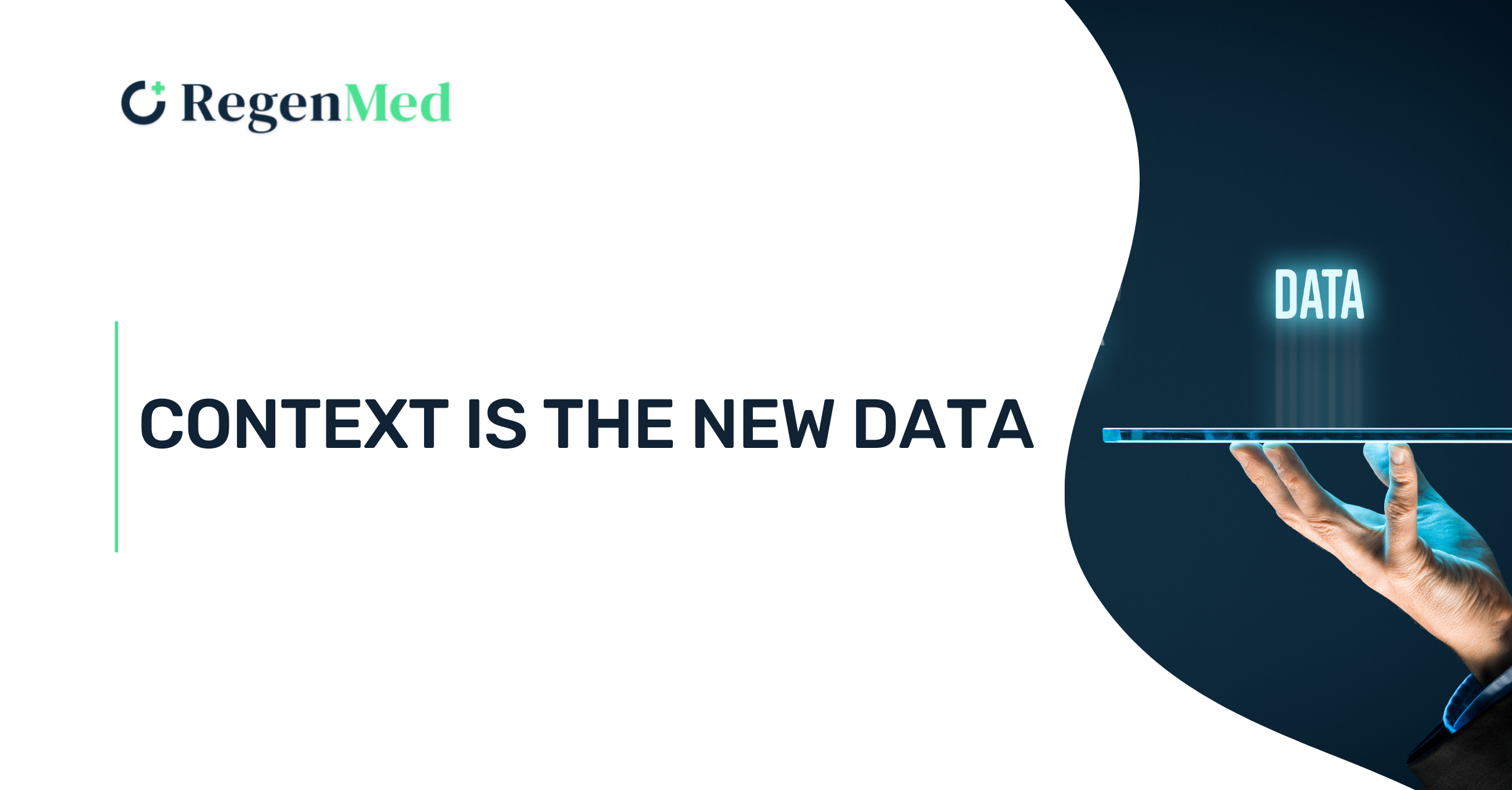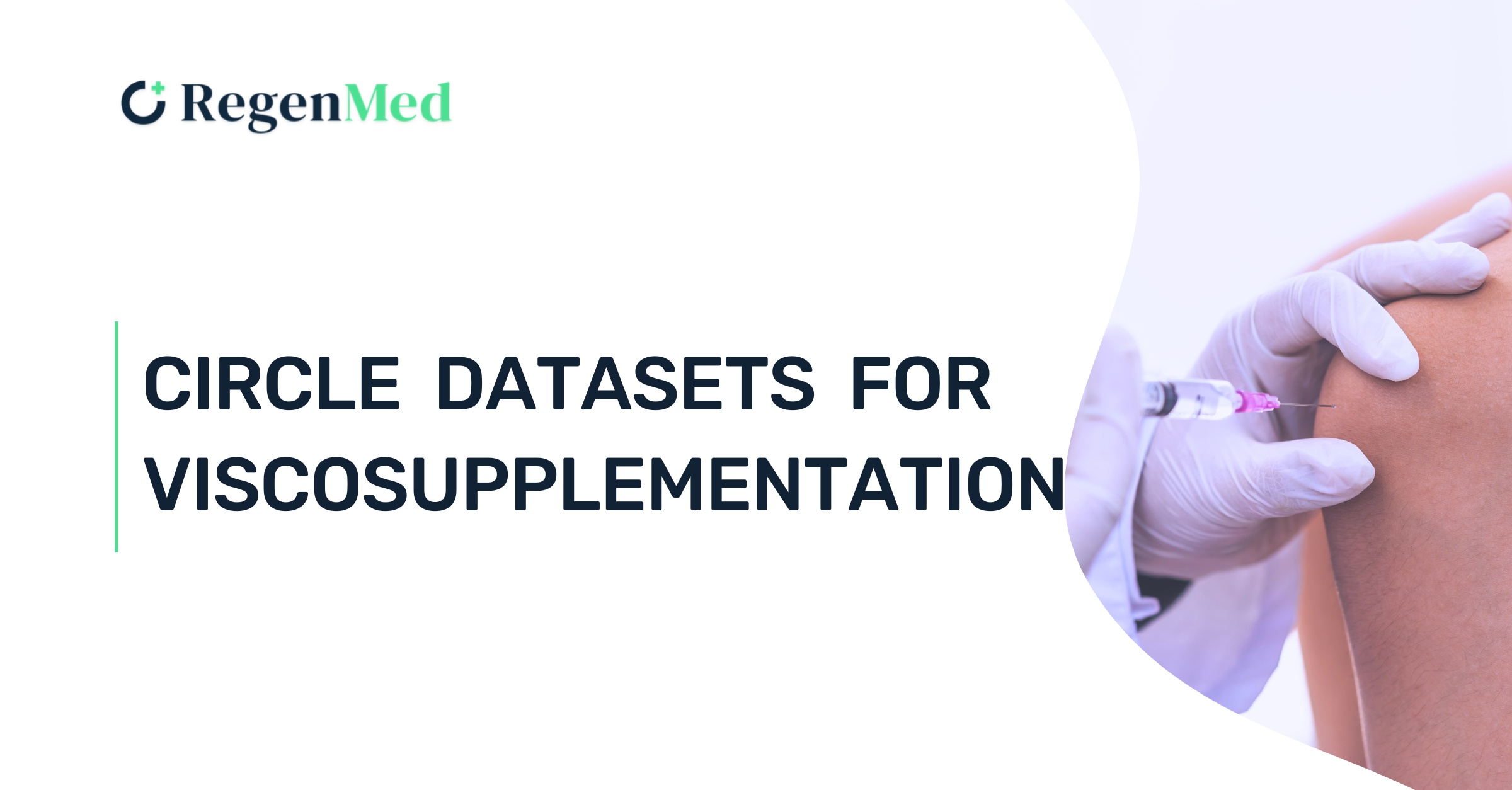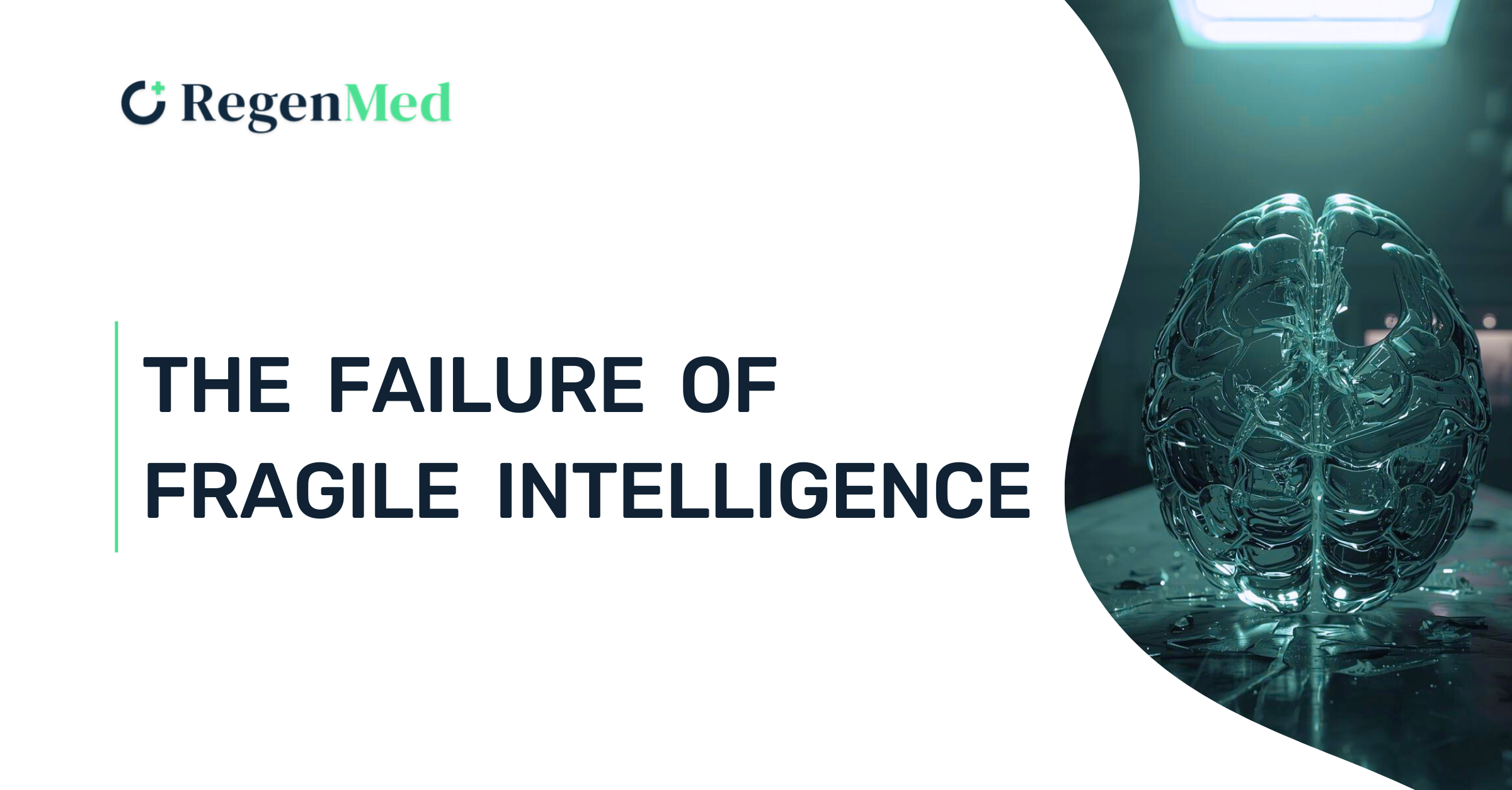Circle Datasets: Resolving The Viscosupplements Paradox For Knee OA
Viscosupplementation’s debate isn’t pharmacology — it’s evidence. Learn how schema-on-capture, imaging-verified delivery, and deterministic RWE turn HA injections into a precision, value-based KOA intervention.
AbstractKnee osteoarthritis (KOA) represents one of the most costly and clinically ambiguous conditions in modern musculoskeletal care. Intra-articular hyaluronic acid (HA) viscosupplementation occupy a contested position between conservative therapy and total knee arthroplasty, simultaneously supported by widespread clinical use and challenged by guideline skepticism and payer resistance. This article argues that the controversy surrounding viscosupplementation is not fundamentally pharmacologic, but evidentiary. By shifting from retrospective, inferential data to prospectively captured, schema-driven real-world evidence (RWE), providers can generate deterministic “ground truth” capable of resolving long-standing disputes over efficacy, value, and appropriate patient selection. We examine how imaging-verified delivery, longitudinal outcomes, and synthetic control arms can transform viscosupplementation from a commoditized procedure into a verifiable, value-based intervention.The Viscosupplementation ParadoxThe global viscosupplementation market is substantial and growing, driven by demographic aging and the rising prevalence of osteoarthritis. Estimates place the market between approximately $1.6 and $4.7 billion annually, with projected compound annual growth rates near 8–9% through the early 2030s. Despite this scale, viscosupplementation remains persistently controversial.Clinical guidelines illustrate this tension. The American Academy of Orthopaedic Surgeons (AAOS) has historically recommended against routine use of HA injections for knee osteoarthritis, citing modest average improvements over placebo in randomized controlled trials (RCTs). Although the most recent guidelines softened earlier language, they continue to question whether statistically significant effects translate into clinically meaningful benefit for the average patient. In contrast, rheumatology societies and manypracticing clinicians report consistent benefit in carefully selected patients, particularly earlier in the disease course.This disconnect has real consequences. Payers increasingly impose step-therapy requirements, restrict coverage, or deny reimbursement altogether. Providers face heightened audit risk, while manufacturers struggle to defend formulary placement. Yet none of these actors dispute the underlying biology of HA; rather, they disagree about who benefits, under what conditions, and by how much.The Limits of Conventional EvidenceAt the heart of the controversy lies a structural problem in how evidence is generated. Traditional RCTs in knee osteoarthritis aggregate heterogeneous populations, often including late-stage patients with minimal remaining cartilage — patients unlikely to respond to viscosupplementation. This dilution effect suppresses observed efficacy and masks responder subgroups.Compounding the issue is the unusually large placebo response in osteoarthritis trials. Placebo effects account for up to 60–75% of observed pain reduction in some intra-articular injection studies, obscuring true treatment effects and contributing to late-stage trial failures. When outcomes are subjective and follow-up inconsistent, inferential gaps become unavoidable.Real-world data, as currently captured, does little to solve this problem. Claims data and unstructured electronic medical record (EMR) notes lack confirmation of intra-articular delivery accuracy, disease severity, or standardized outcomes. These “data exhaust” sources require heavy inference and cannot establish causality. As a result, regulators, payers, and guideline bodies are forced to guess at value rather than verify it.Schema-on-Capture and Deterministic Ground TruthA fundamentally different approach is required — one that treats data generation as a clinical act rather than a byproduct of billing. The schema-on-capture model proposes defining the evidentiary architecture before care is delivered. In the context of viscosupplementation, this means prospectively capturing:Verified delivery: Fluoroscopic or image-guided confirmation that HA was delivered intra-articularly, rather than peri-articularly or into the fat pad. Accuracy rates for blind knee injections may be as low as 70–80%, compared with >95% for image-guided techniques, a difference with potential downstream impact on outcomes.Structured disease state: Radiographic severity (e.g., Kellgren–Lawrence grade, joint space width) captured in standardized, machine-readable form.Longitudinal outcomes: Validated patient-reported outcome measures (WOMAC, KOOS-JR) collected at fixed intervals, combined with objective endpoints such as time to total knee arthroplasty.Optional biologic context: Synovial fluid biomarkers, when available, to characterize inflammatory phenotypes associated with response or non-response. By enforcing structure at the moment of care, schema-on-capture eliminates the inference gap. Each record becomes a deterministic unit of evidence rather than a probabilistic data point.Precision, Placebo, and the Synthetic Control ArmOne of the most powerful applications of deterministic RWE is the construction of high-fidelity synthetic control arms. In osteoarthritis drug development, placebo-controlled trials are expensive, slow, and ethically contentious due to high screen-failure rates and strong placebo responses. Pharmaceutical sponsors routinely spend $40,000–$100,000 per patient in late-phase trials.An imaging-verified, longitudinal dataset of patients receiving standard-of-care viscosupplementation can serve as an external comparator, dramatically reducing trial costs while improving interpretability. Unlike conventional registries, such datasets explicitly characterize the “ritual of care” associated with injections — frequency of visits, imaging, clinician interaction — allowing placebo effects to be modeled rather than ignored .This approach aligns with growing regulatory acceptance of real-world evidence and synthetic control methodologies, particularly in areas where traditional trials are impractical or ethically fraught. Importantly, the value of such datasets derives not from scale alone, but from veracity.Economic Implications: From Commodityto AssetHealthcare data is often treated as a commodity, but evidence quality follows a steep valuation gradient. Low-fidelity claims data may command $50–$150 per record, while curated clinical registries reach $500–$1,500 per patient. Deterministic, regulatory-grade longitudinal records — analogous to those that underpinned acquisitions such as Flatiron Health and CorEvitas — can justify valuations exceeding $5,000 per record when used in regulatory, payer, or drug-development contexts.For large KOA provider groups, this reframes the economics of care delivery. Rather than maximizing procedure volume under reimbursement pressure, practices can generate durable data assets that support value-based contracts, post-market surveillance, and licensing to life-science partners. In this model, data quality becomes a clinical and financial imperative.Reframing the Clinical DebateThe long-running dispute over viscosupplementation efficacy has persisted not because the therapy is ineffective, but because the evidence infrastructure has been inadequate. Average effects derived from heterogeneous populations and unverified delivery cannot resolve questions of precision medicine.Deterministic RWE offers a path forward. By identifying responder phenotypes, verifying technical success, and anchoring outcomes in longitudinal reality, clinicians can move the discussion from ideology to proof. For payers and regulators, this enables rational coverage decisions based on measurable cost avoidance, such as delayed arthroplasty. For patients, it offers a clearer answer to asimple question: Will this work for someone like me?ConclusionKnee osteoarthritis sits at the intersection of clinical uncertainty, economic pressure, and regulatory scrutiny. Viscosupplementation has become a proxy battle for deeper failures in how healthcare value is measured. The solution is not another meta-analysis of imperfect trials, but a structural redesign of evidence generation itself.Schema-on-capture, imaging-verified delivery, and deterministic real-world datasets allow providers to become architects of truth rather than subjects of inference. In doing so, they can transform viscosupplementation from a contested procedure into a verifiable, precision-guided intervention — and, in the process, redefine their role in the evidence economy.References RegenMed, Circle Datasets for the Viscosupplements Market with a Focus on Knee Osteoarthritis, December 2025. American Academy of Orthopaedic Surgeons. Management of Osteoarthritis of the Knee (Non-Arthroplasty): Clinical Practice Guideline, 2021. Borst et al. Placebo Effect Sizes in Clinical Trials of Knee Osteoarthritis Using Intra-Articular Injections. Arthritis Care & Research, 2025. Roche. Roche to Acquire Flatiron Health to Accelerate Industry-Wide Use of Real-World Data, 2018. Thermo Fisher Scientific. Thermo Fisher Scientific Acquires CorEvitas for $912.5M, 2023.
See more







